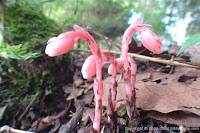Photos in this page by galasdeguatemala.com, used with authorization.
Santiago Sacatepequez is another Municipality of the Department of Sacatepequez and it is located only 34 kilometers West from Guatemala City. Most of the population is comprised by Maya Cakchiquel descendants and they speak Cakchiquel.
Every July 25th., there is a festival to honor the saint patron, Santiago Apostle (James, son of Zebedee); however, Santiago Sacatepequez is world famous for the celebration of the Day of the Dead and All Souls, celebrated on November 1st. and 2nd. This is the time when giant kites (barriletes) up to ten meters in diameter, made of tissue paper and bamboo, soar in the skies.
This tradition was born here, in Santiago Sacatepequez and, according to some documents, it is said it started at the beginning of the XX century; I am not really sure about that and my personal conclusion is that, being Guatemala a place where the oral tradition prevails, it was probably until those dates when this celebration was documented in written documents. Even within the population of Santiago, there are several opinions regarding this matter. What I can tell without any doubt, is that the kites are now larger, more colorful, much more beautiful than they were before.
Anyway, the purpose of this post is not to give you a lecture, but to share with you this amazing expression of credences made art. One of the most accepted credence indicates that the kites are intended to send the bad spirits away, to become messengers between the live and the dead, and to be part of the celebration, a celebration that honors life and death.
While this colorful and intriguing festival is going on, families follow the usual custom on all souls day of laying flowers on their relatives' graves, and holding graveside vigils sharing food, extraordinary food I must add that deserve a separate post.
From all the videos I found and watched, I want to share two, the first one, from the Plug Sonido Channel, a documentary about the ceremony thanking Mother Earth and asking her permission to cut the bamboo; the second one, from the Tierra de Lenguas Channel, with interesting information and extraordinary images. Please click and enjoy!





















































